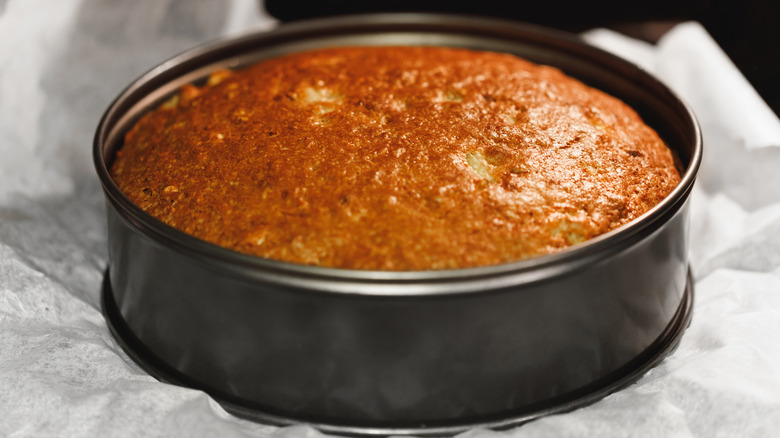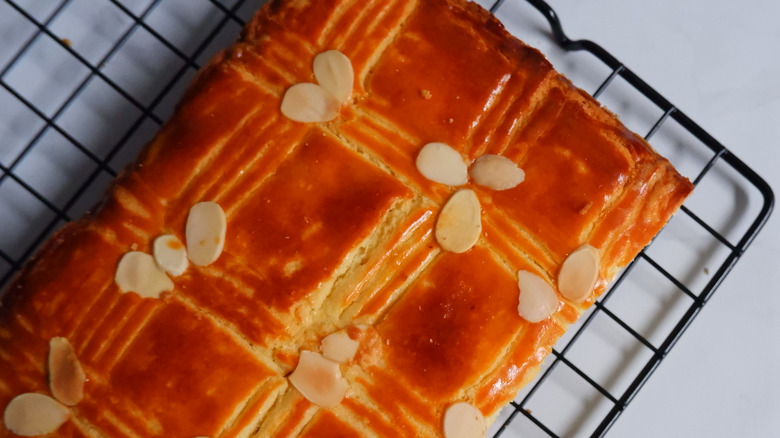The Cooling Rack Trick That Saves Gluten-Free Bakes From Going Gummy
There are many reasons people choose to remove gluten from their diets these days. Whether avoiding gluten due to celiac disease, a gluten allergy or sensitivity, or other dietary preferences, everyone deserves to enjoy the simple pleasure of a light, fluffy slice of cake or a deliciously chewy piece of bread. Luckily, there have been many strides in the recipes and ingredients around gluten-free baking in the last decade, with an abundance of quality gluten-free 1:1 replacement flour blends available on grocery store shelves.
However, even with the best formulas and tools, one of the biggest and long-lasting gluten-free baking qualms still is dealing with mushy and gummy centers. This tendency for dense middles often deters the best gluten-free and traditional bakers alike from putting on their aprons and whipping up gluten-free treats in the kitchen. Luckily, we have the secret to keeping your gluten-free baked goods light and airy, and it's a simple prep method adjustment you probably didn't think of.
Steam after baking can trap unwanted additional moisture
In traditional baked goods, gluten, the protein found in wheat flour, functions to retain gas and develop an open, airy structure. In gluten-free bakes, this function is often replaced using a variety of starches and gums (most notably xanthan gum), which are known for their capacity to hold and bind water. The starches and gums in 1:1 gluten-free flours function to hold the gasses during baking, just as gluten would. While this helps with the moisture-loving capacity desired during the baking process, gluten-free baking can be very finicky and dependent on small changes in moisture ratios. Often just a little extra moisture can throw things off, resulting in dense, gummy bakes. This includes the steam contained in your gluten-free cornbread, even after it has been removed from the oven.
While it is tempting to let gluten-free bakes sit in the pan to cool, in an article she wrote for the Kitchn, Elizabeth Barbone, author of the cookbook "Easy Gluten-Free Baking," notes that it is essential to transfer baked goods from the pan to cool on a wire rack. This in turn halts the baking process and helps prevent unnecessary extra steam from getting trapped in your gluten-free baked good matrix.
How to safely and quickly cool your baked goods
It is best to transfer gluten-free bakes directly to a wire rack in order to allow for them to breathe and for the most steam to be released after the baking process is complete since even cooling your cake on a plate could cause additional unwanted moisture to be contained.
Many traditional baked goods recipes call for letting your cake sit in the pan to cool for up to 15 or 20 minutes before removing from the pan so they don't break or fall apart upon removing too quickly. While this step is still crucial, since time is of the essence when baking gluten-free cakes, we recommend removing your cake or cornbread a bit sooner, after it has just started to cool down and is safe to touch — about five to 10 minutes after removing from the oven. For a seamless removal from the pan, it can also help to generously grease and flour the pan or prepare the pan with parchment paper prior to baking, and insert a knife around all corners of the pan before flipping them onto wire racks to cool.


